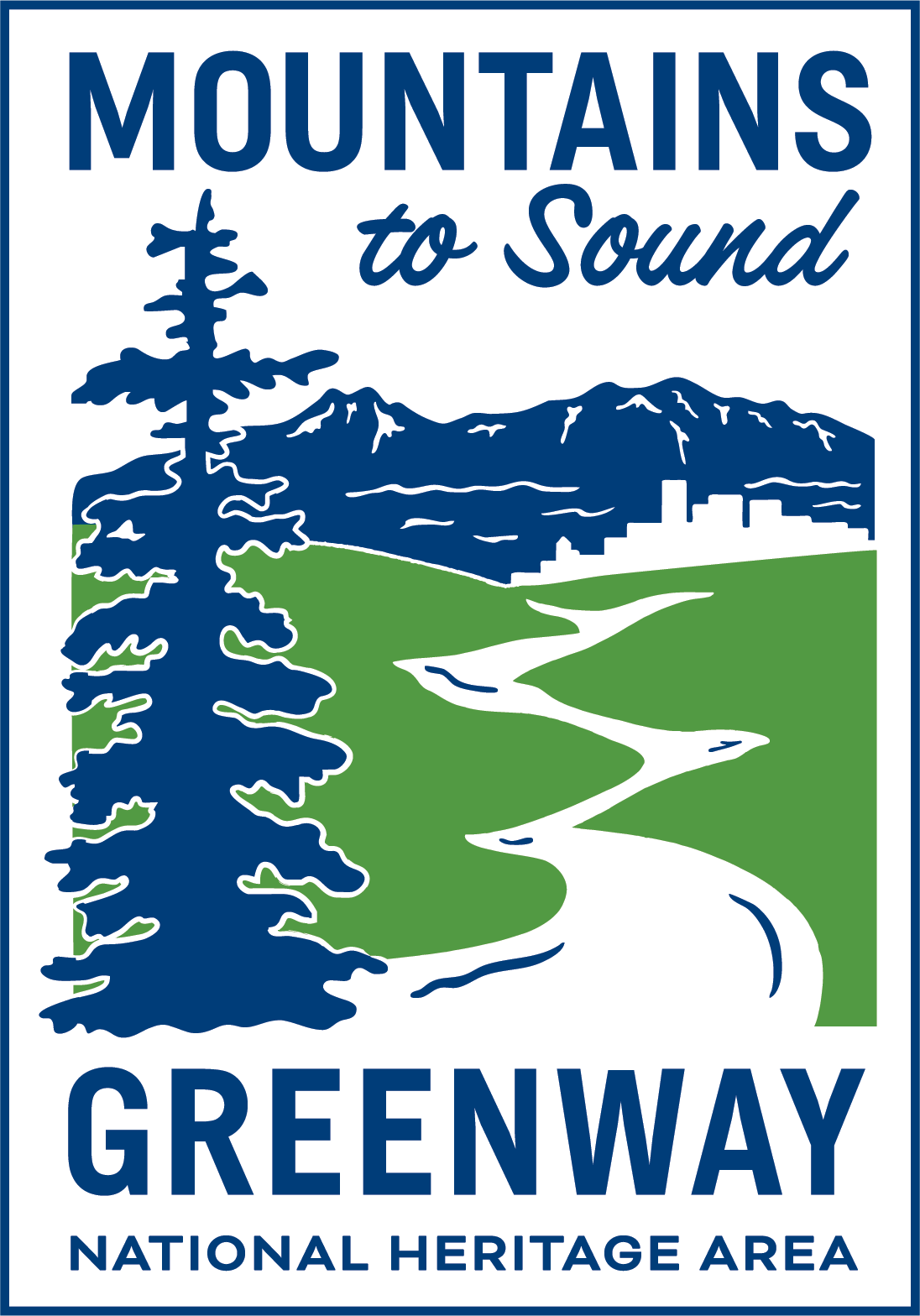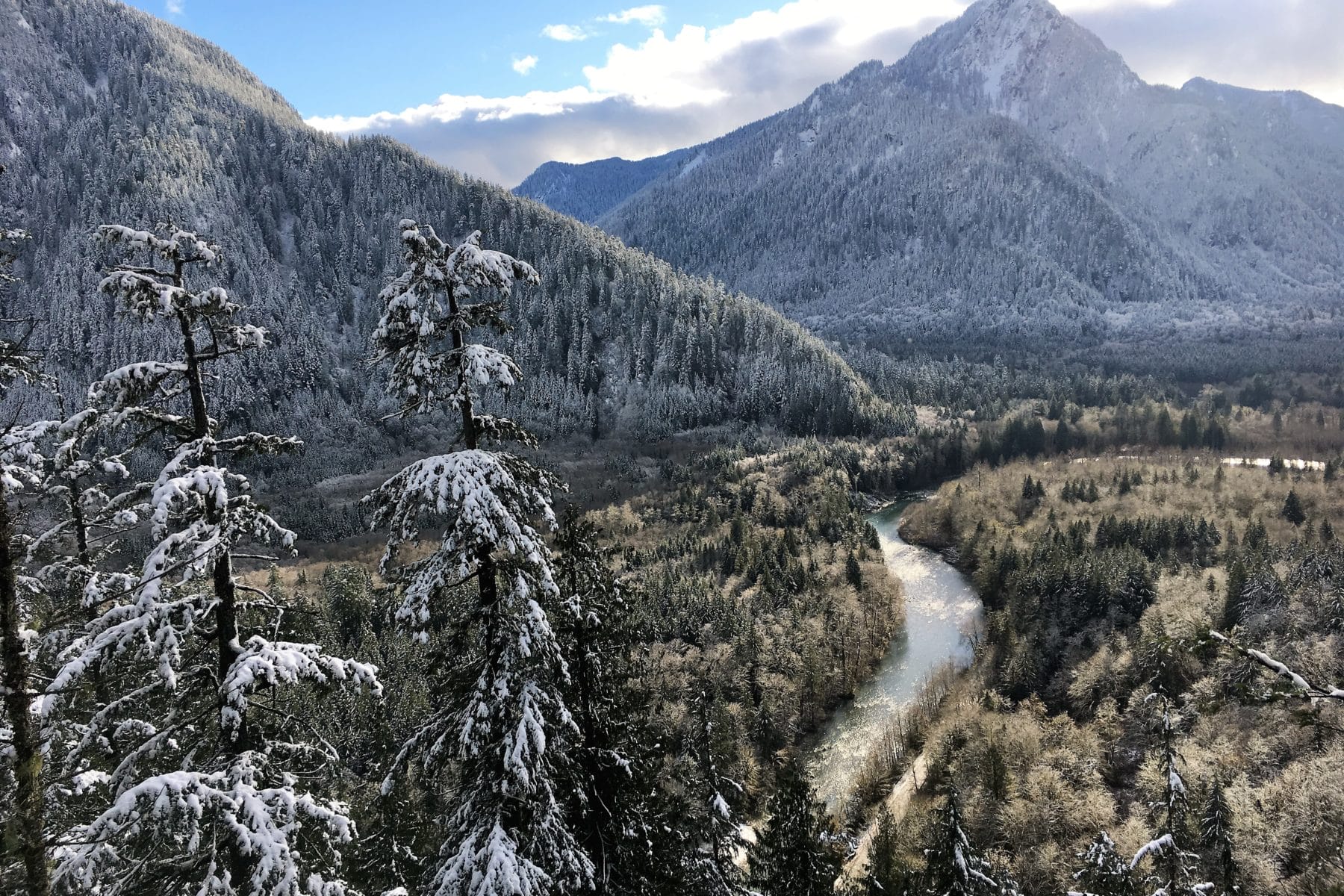Snapshot: Greenway Highlights of 2016
Nationally, it was a divisive year. Locally, it was a different story. As we look back on 2016, we are proud that we do things differently here. Our region showed that bipartisan efforts can succeed, that different voices can come together to find creative solutions to some of our region’s most difficult challenges.
The Mountains to Sound Greenway is a coalition built on inclusivity, not exclusivity. Our friends and supporters represent every corner of the political spectrum—Democrats, Republicans, and third parties routinely put differences aside to demonstrate bipartisan cooperation. Trust, collaboration, understanding, and pragmatism—it’s the ‘Greenway Way’. It’s why we’ve accomplished things in conservation that no other region in the country has been able to achieve. Our way of doing things can and should catch on. Let us be a shining example for the country, creating big, new ideas in taking care our precious public lands and waters, and prove to the rest of the nation that this way works.
The ‘Greenway Way’ led to numerous accomplishments this year. We’ve selected several to highlight below. These successes are thanks to our broad-based coalition. It’s well known that the secret to the Greenway’s success has always been our passionate supporters who together move mountains.
Highlights from 2016:
Yakima River Access

Momentum is building to provide more outdoor recreation for residents and visitors in the Upper Yakima Basin. The Greenway Trust and many partners are hard at work on projects that enhance access to the spectacular peaks and forests this region is known for, and that improve trail connections between local communities. One priority is to increase river access for rafting, swimming, and fishing. This year, Washington Department of Fish and Wildlife constructed a new access point on the Yakima River near Thorp. This provides a safe place for people to exit the river after floating the popular and scenic stretch of river between Cle Elum and Thorp.
Middle Fork Trail Repair

As the Middle Fork Road nears completion, our community must confront a new challenge: how will we keep the Middle Fork Valley from being loved to death? The solution is complex and multi-faceted. A first step toward that solution is restoring access to the Middle Fork Trail, which was damaged by storms ten years ago. Now, a public-private partnership has come together to fix it. The Greenway Trust, REI, Washington State RCO, the National Forest Foundation, and WTA raised the resources and people power that the U.S. Forest Service needed to repair the trail. The trail re-route has been completed and the full route is now accessible for all trail users. Additional improvements to trail structures to ease access will be conducted over the next few years.
New Recreation Sites in the Middle Fork

Elsewhere in the Middle Fork Valley, State DNR has invested in numerous recreational enhancement projects in anticipation of increased usage. With support from the Greenway coalition, DNR secured over $2 million to build new front country recreational projects. These projects—including Mailbox Peak and Granite Creek trails, and day use sites at Mine Creek and Champion Beach—will provide family-friendly river access and new hiking opportunities, just in time for next summer.
A River Runs Through It

This spring the Greenway Trust launched a new initiative to mobilize the Snoqualmie River Valley community. Our workshop series, called ‘A River Runs Through It,’ brought together more than a hundred community, government, and business leaders to build a more united Valley, a stronger local economy, and a deeper connection to the outdoors. Together, we launched new efforts to promote local food and farms, outdoor recreation, cultural heritage, and the arts. Some of the first fruits of this labor include the farm-to-table Bounty Week, a heritage summit, and a new Valley-wide brand known as ‘Savor Snoqualmie Valley.’
Olallie Trail

The Olallie Trail on Mt. Washington will open next year, adding an exciting destination just east of North Bend. This new multi-use trail demonstrated a brand new model for how Washington’s recreation partners can share resources and expertise to build the trails our region needs. State Parks manages the land and received the construction funding through the Washington Wildlife and Recreation Program. They tapped into specialized expertise at State DNR to design and manage construction through an interagency agreement. And then the Evergreen Mountain Bike Alliance and Greenway Trust pitched in to build the trail. This was one of the first times that this cross-agency staff sharing has occurred in Washington, and the results were so successful that it’s now being used as a model for other projects. Learn more.
Making Trailheads Safer

On sunny days, when people flock to many of the Greenway’s popular trailheads, parking areas overflow, blocking roads and impacting neighbors. Sufficient law enforcement coverage is part of the solution to keep trail users and neighbors safe. With budgets stretched thin, we have to think outside of the box for ways to get more officers on the ground. The King County Sheriff just authorized State DNR law officers to enforce laws not just on DNR lands, but on surrounding lands and roads when they see an issue. The sharing of resources will go a long way to improving public safety at our trailheads. Learn more.
Stossel Creek Conservation

Over the last twenty five years, the Greenway coalition has successfully joined together to conserve natural lands in and around our cities. These acquisitions have conserved wildlife habitat and trail networks, protected water quality, and safeguarded the breathing room that open areas provide for people in our fast-growing region. One of the recent additions was in the Tolt River Watershed, where Seattle City Light acquired 154 acres of private land along Stossel Creek, within the Marckworth State Forest. The acquisition will allow restoration of wetlands and important coho and steelhead habitat, and opens up future access points to adjacent trails.
Rattlesnake Mountain Conservation

Another land conservation success occurred on the flank of Rattlesnake Mountain. The Trust for Public Land, with partners at City of North Bend, King County, and Si View Metropolitan Parks, purchased 36 acres of forested land on the southern edge of North Bend. This forested parcel will become a North Bend city park, a King County regional trailhead for hiking and mountain biking, a future connection into the Raging River State Forest, and an environmental education site for people of all ages to learn about forest canopy.
Sparking Curiosity in the Outdoors

This summer, we teamed up with the Pacific Science Center for our new “Searching for Sasquatch” camp. We used the search for mythical creatures to spark kids’ curiosity about the natural world. To track Sasquatch, students honed their observational skills and practiced plant and animal identification. When they finally found him on Cougar Mountain, they started jumping up and down with excitement–although a few astute scientists-in-training quickly asked, “is he real?” Our students left camp with lots of questions and curiosity about the natural world, along with the skills to help them find answers. Learn more.
National Conservation Leadership Award: Manastash-Taneum

In the eastern Greenway, our forests face significant challenges from past fire suppression, high fuel loads, and climate change. This has prompted a big shift in forest management. A flagship effort in the Manastash-Taneum watershed is testing a basin-wide restoration strategy that benefits both people and nature. The State of Washington, The Nature Conservancy, the U.S. Forest Service, and the Yakama Nation joined forces to improve ecosystem resilience and reduce the risk of catastrophic fires, and were just awarded a national conservation leadership award for these efforts.
Iron Horse Tunnel Repair

The John Wayne Pioneer Trail is one of the most popular recreation designations in the Greenway. Built on the old Milwaukie Railroad line, it serves as the backbone of a cross-Greenway trail network. However, the trail isn’t a spring chicken anymore and State Parks has been hard at work for twenty years repairing the 100-year-old tunnels and trestles. This year, State Parks relined a crumbing tunnel near Thorp, improving public safety and access to the Yakima Canyon.
Invasive Weed Partnership

Anyone with blackberry in their yard can attest to the speed by which invasive weeds multiply. The same is true in our public forests—we must act quickly and often to keep weeds at bay. But the biggest challenge isn’t the weeds: it’s finding the money and workforce to remove them. Thankfully, our region has a knack for finding creative solutions. This year the Greenway Trust teamed up with the National Fish & Wildlife Foundation and the Kittitas County Noxious Weed Control Board to control weeds on The Nature Conservancy’s newly acquired Central Cascades Forest. It was one of the first of many new public-private partnerships to come that improve ecological health in the Upper Yakima Basin.
Transformation at Lake Sammamish State Park

Lake Sammamish State Park is undergoing a major transformation. Recreation enhancements, including the new playground and beach access, are enriching the visitor experience for all ages and abilities. Habitat restoration is reclaiming Issaquah Creek from invasive weeds for better salmon habitat. Community volunteers have contributed more than 1,000 hours restoring the creek, planting native trees, and building the new playground. To fund all of this, local businesses have teamed up with government agencies and state legislative supporters. It’s truly a community-wide effort to repair this natural gem in the midst of our urban core.





